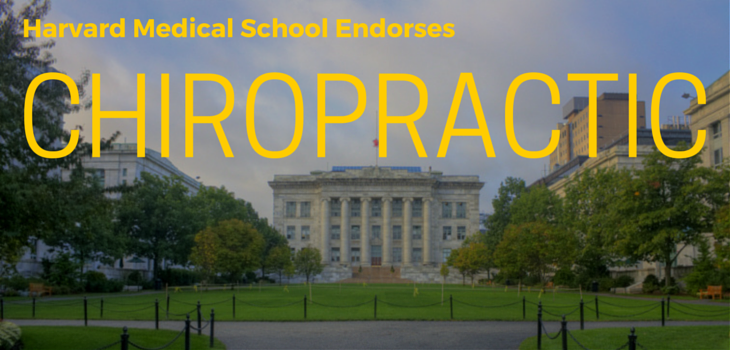Harvard Medical School Endorses Chiropractic and Report it Safe
Much of medical academia has been supporting chiropractic and now many of the most prestigious medical institutions are publishing their support for our care. In large, this is a result of the overwhelming positive pro-chiropractic scientific literature that has been published over the last few years with more coming. The referenced article review is from Harvard Medical School explaining both what their view of chiropractic is, who we treat and the rarity of adverse side effects. In short, Harvard Medical School now says what the chiropractic profession has been saying for years.
“Chiropractic is a health care system that holds that the structure of the body, particularly the spine, affects the function of every part of the body. Chiropractors try to correct the body’s alignment to relieve pain and improve function and to help the body heal itself.
While the mainstay of chiropractic is spinal manipulation, chiropractic care now includes a wide variety of other treatments, including manual or manipulative therapies, postural and exercise education, ergonomic training (how to walk, sit, and stand to limit back strain), nutritional consultation, and even ultrasound and laser therapies. In addition, chiropractors today often work in conjunction with primary care doctors, pain experts, and surgeons to treat patients with pain.
Most research on chiropractic has focused on spinal manipulation for back pain. Chiropractic treatment for many other problems—including other musculoskeletal pain, headaches, asthma, carpal tunnel syndrome, and fibromyalgia—has also been studied. A recent review concluded that chiropractic spinal manipulation may be helpful for back pain, migraine, neck pain, and whiplash.
There have been reports of serious complications, including stroke, following spinal manipulation of the neck, although this is very rare and some studies suggest this may not be directly caused by the treatment.
“Spinal manipulation” is a generic term used for any kind of therapeutic movement of the spine, but used more precisely it is the application of quick but strong pressure on a joint between two vertebrae of the spine. That pressure twists or rotates the joint beyond its normal range of motion and causes a sharp cracking noise. That distinctive noise is believed to be caused by the breaking of a vacuum or the release of a bubble into the synovial fluid, the clear, thick fluid that lubricates the spinal and other joints. Spinal manipulation can be done either directly by pushing on the vertebrae or indirectly by twisting the neck or upper part of the body. It should be done to only one spinal joint at a time. Chiropractors and other practitioners accomplish this by positioning the body so the force they exert is focused on one joint while parts of the spine above and below it are held very still. Most spinal manipulation treatments take somewhere between 10 and 20 minutes and are scheduled two or three times a week initially. Look for improvements in your symptoms after a couple of weeks.
In addition, a chiropractor may advise you about changing your biomechanics and posture and suggest other treatments and techniques. The ultimate goal of chiropractic is to help relieve pain and help patients better manage their condition at home.”
Original Article:
Chiropractic care for pain relief







Leave a Reply